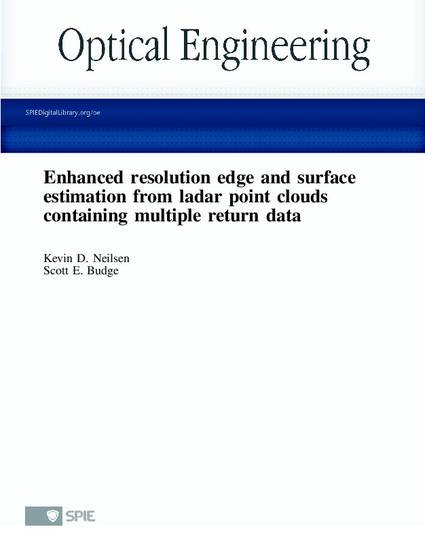
Article
Enhanced resolution edge and surface estimation from ladar point clouds containing multiple return data
Optical Engineering
(2013)
Abstract
Signal processing enables the detection of more returns in a digital ladar waveform by computing the surface response. Prior work has shown that obtaining the surface response can improve the range resolution by a factor of 2. However, this advantage presents a problem when forming a range image—each ladar shot crossing an edge contains multiple values. To exploit this information, the location of each return inside the spatial beam footprint is estimated by dividing the footprint into sections that correspond to each return and assigning the coordinates of the return to the centroid of the region. Increased resolution results on the edges of targets where multiple returns occur. Experiments focus on angled and slotted surfaces for both simulated and real data. Results show that the angle of incidence on a 75-deg surface is computed only using a single waveform with an error of 1.4 deg and that the width of a 19-cm-wide by 16-cm-deep slot is estimated with an error of 3.4 cm using real data. Point clouds show that the edges of the slotted surface are sharpened. These results can be used to improve features extracted from objects for applications such as automatic target recognition.
Keywords
- ladar,
- lidar,
- waveform processing,
- super-resolution,
- multiple return,
- footprint,
- point cloud,
- surface response
Disciplines
Publication Date
November, 2013
DOI
10.1117/1.OE.52. 11.113103
Citation Information
Kevin D Neilsen and Scott E Budge. "Enhanced resolution edge and surface estimation from ladar point clouds containing multiple return data" Optical Engineering Vol. 52 Iss. 11 (2013) p. 113103 Available at: http://works.bepress.com/scott_budge/56/
